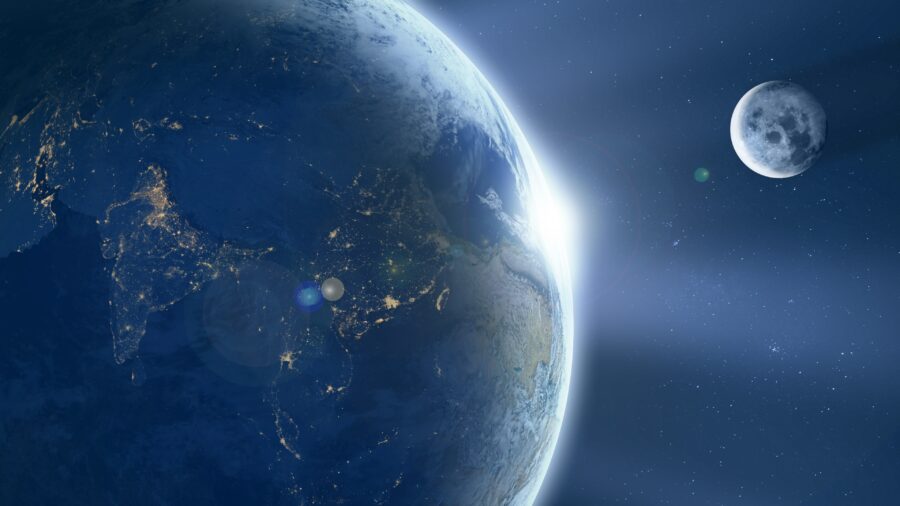There Are Living Creatures On The Moon
The moon isn't quite as solitary as it used to be. Here's what we've learned.
This article is more than 2 years old

How is there life on the moon? Well, we seem to have put it there. Oops?
The Arch Mission Foundation has a simple mission: create a backup plan for human existence. The idea is to create multiple repositories for human life around the solar system in case of a world-ending event here on Earth. So, they make plans to travel the solar system with little backpacks of backup life that include human DNA, human knowledge, and some biology from our planet. In 2019, they joined up with Israel Aerospace Industries for the first privately funded mission to the moon. But then their main engine failed and they crashed on the moon in April 2019.
A while later, they pointed out that things they’d packed for their repository were probably still alive on the moon. We actually have an Outer Space Treaty for international space law, and one of the main rules is don’t do this. Don’t populate outer space with life from Earth. More specifically, the rule is not to contaminate the environment. Researchers are trying to study space. It makes it hard to search for a legitimate source of water on Mars if someone flies over there and then just leaves a water bottle lying around. Scientists then have to awkwardly ask where that came from. “Excuse me, was this your mess?” No one likes having to ask those kinds of questions.
Despite those rules and the best intentions, we contaminated the moon. Moreover, we did it in one of the most interesting ways possible: with moss piglets. Sometimes, they’re called water bears, but they’re technically called tardigrades. Despite the fact that we’ve given them such cute nicknames, primarily, what scientists do is try to kill them. They’re considered indestructible, and we would really like to know why that is. So, we do things, like shoot them out of guns to see if they live.
In 2007, we sent them to space and when they returned, we found them to mostly still be alive. This makes sense, because tardigrades have been around for 500 million years. They’ve survived mass extinction events on Earth already. They’re less than a millimeter long. They’ve been found in arctic ice, where we believe they had been for 30 years or so, and they were still having babies and thriving. Scientists aren’t completely sure how long these moss piglets may survive on the moon. It’s very much a topic of debate. However, it’s very possible.
While we don’t fully understand what makes tardigrades indestructible, we do have some insights. Humans are mostly made of water, as is most life. Tardigrades included. Except, tardigrades have another form called a “tun”.
A tun is when the tardigrade is dehydrated so that there is barely any water left in them. They produce a sugary gel called trehalose that keeps their organs functioning. As a tun, they don’t have the cute little legs you see in the picture from Twitter above. Instead, they look more like a blob. In this state, they can survive to nearly freezing numbers and up to 150 degrees Celsius. They’re incredibly resilient. A trip to the moon is no big deal for these little guys. While they could have died, there is every chance that they are just floating around, waiting for some water so they can get back to the business of being inexplicably adorable.
The Arch Mission Foundation had the tardigrades encased in amber and stuck to tape. Are they still up there? Maybe. If so, what does that mean for the moon? Well, we can’t exactly consider it a pristine environment. Still, the tardigrades, if alive, should be dehydrated. Anyone who’s seen Gremlins knows the rule from here: don’t get them wet.
What would be super interesting is if we could find them, collect them, and bring the tardigrades back to Earth. Then, we could study them to see what effects being on the moon had on them. This may give scientists more insight into what makes the water bears indestructible, and what being on the moon does to indestructible beings over time. Unfortunately, that doesn’t seem likely to happen anytime soon. Space explorers have priorities that take precedent over tracking down dehydrated water bears, particularly since there is still debate to be had over whether they’re still up there. You never know, though. One day, an astronaut may pop up there only to find a colony of the sturdy little guys. Who knows what scientists will learn about them then.












